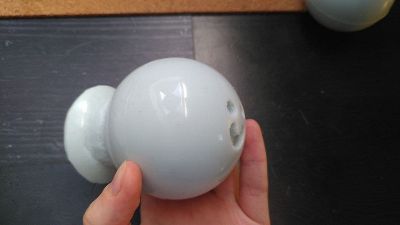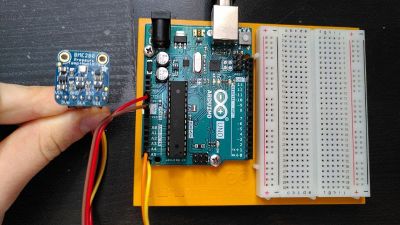Documentation Analog Circuits and Interfaces
Introduction
In the course ‘Analog Circuits and Interfaces’ we learned the basics of electrical engineering, electric circuits and oscillators. We built prototypes and soldered a ILSE sound board. Our task as students was to design a way to give input to that board so that it is controllable. My approach was to design it like a traditional musical instrument, so that the user can play it and eventually master it.
Idea and Inspirations
I am drawn to squishy movement and materials as opposed to hard and brittle ones. This led me to choose silicone as the main material for my input device. Some products that were an inspiration to how I wanted the controller to look and feel are stress balls and squishy toys. (s. Amazon & Yodabu) Silicone is usually not used for traditional instruments.
In inspiration of wind instruments (s. Encyclopaedia Britannica) that are played by blowing into them, I wanted to give my instrument a similar interaction to that in form of a mouthpiece and a body in which the air can circulate. In combination with the material, a good comparison would be a balloon.
A traditional instrument that also works by pressing air and stretching is the accordion. (s. Encyclopaedia Britannica)
Visual and Physical Design
My final design is a ball with a diameter of 7cm that is hollow on the inside. It is made from silicone with a very low degree of hardness, so that the material is flexible and stretchable. On one side is a hole that can be used as a mouthpiece and on the other side there is a small smiling face. :) On the inside there is a sensor for barometric pressure, so that the device can keep track of how much air is blown into the ball. The silicone has a mint green to light turquoise color, which was achieved by mixing a very small amount of pigments to the silicone before casting it.
The visual design was inspired by a pufferfish. (s. Encyclopaedia Britannica) The shape is kind of similar to its body, despite the missing spikes. Because the material is stretchy, the input device becomes a little bit bigger when there’s a lot of air in it, kind of like a pufferfish that is puffed up when in danger.
Previously, I designed sssnake, (s. Scholz) which’s visual design was also inspired by an animal.
Interaction Design
The anticipated interaction is similar to playing a wind instrument, eg a saxophone or trumpet. Instead of producing an acoustic sound using the air circulation, the barometric pressure is read electronically to give the input to the ILSE board.
The user blows into the hole on the back, in comparison to an instrument's mouthpiece. Depending on how much air there’s inside of the ball, the frequency of the sound will be higher or lower.
An interaction, which later turned out to give more control to the user, was to close the hole in the ball with one hand and squish it with the other. This is probably because humans use their hands to do most things, so they have higher motor skills with them than with their mouth and their face.
Technical Details
The sensor used to read the barometric pressure is an Adafruit BME280. (s. Adafruit) It can also read temperature and humidity. It is connected to an Arduino Uno. (s. Ardunio)
I used the BME’s example code to read out the barometric pressure, which is given to the Arduino as a float value. In the setup of the Arduino sketch, I compute the current average pressure by taking 10 samples within a second. From now on, the current pressure will be compared to the average, so I can tell how much the pressure has changed. I then map this value to a float between 0 and 255, so it can be used as an analog output for the Ardunio’s analog pins, which then goes to the ILSE’s input.
Reflection
Casting silicone was something that I had not done before and that I taught myself how to do for this course. Doing it without a proper workshop was kind of hard (and messy) to do, which is why I feel like I could have done better looking prototypes if I would have access to the ‘Gips- und Formenbau’ workshop for instance.
Another problem that I had was the fact that my prototype was very fragile. Because all the cables between the Arduino, the ILSE and the sensor were jumper wires, they slipped out of their sockets very quickly which was annoying when testing and presenting the instrument. For further prototyping it would be more practical if all the cables would be soldered onto the electronics.
As mentioned under the point ‘Interaction Design’, my first idea of blowing into the input controller later changed to squishing it with one’s hands. I think both options are fine and work well, but I liked the first one more because blowing into a pufferfish would have looked funny to me and it would have had similarities to blowing into a balloon. For the future I could try to make the walls of the ball thinner or replace the silicone with a real balloon.
Conclusion
Aside from these struggles, I think the prototype turned out nicely. My initial motivation of making it very squishy worked out well. Sadly my second motivation of wind instruments didn’t fully work out, but I found a good enough alternative.
Literature
Adafruit, Adafruit BME280 I2C or SPI Temperature Humidity Pressure Sensor, https://www.adafruit.com/product/2652, 26.03.2021
Amazon & Yodabu, Stressbälle für Kinder und Erwachsene – Wasserperlen zum Stressabbau, Quetschbälle, sensorisches Spielzeug für Angst, ADHS, Verspannungen und mehr (3 verschiedene Quetschbälle), https://www.amazon.com/-/de/dp/B08P5LKQT2/ref=sr_1_16?__mk_de_DE=%C3%85M%C3%85%C5%BD%C3%95%C3%91&dchild=1&keywords=stress+ball&qid=1616773268&sr=8-16, 26.03.2021
Arduino, Ardunio Uno Rev3, https://store.arduino.cc/arduino-uno-rev3, 20.03.2021
The Editors of Encyclopaedia Britannica, Pufferfish, https://www.britannica.com/animal/puffer, 26.03.2021
The Editors of Encyclopaedia Britannica, Wind Instruments, https://www.britannica.com/art/wind-instrument, 26.03.2021
The Editors of Encyclopaedia Britannica, Accordion, https://www.britannica.com/art/accordion, 26.03.2021
Elisabeth Scholz, elisabethscholz.de, 26.03.2021

